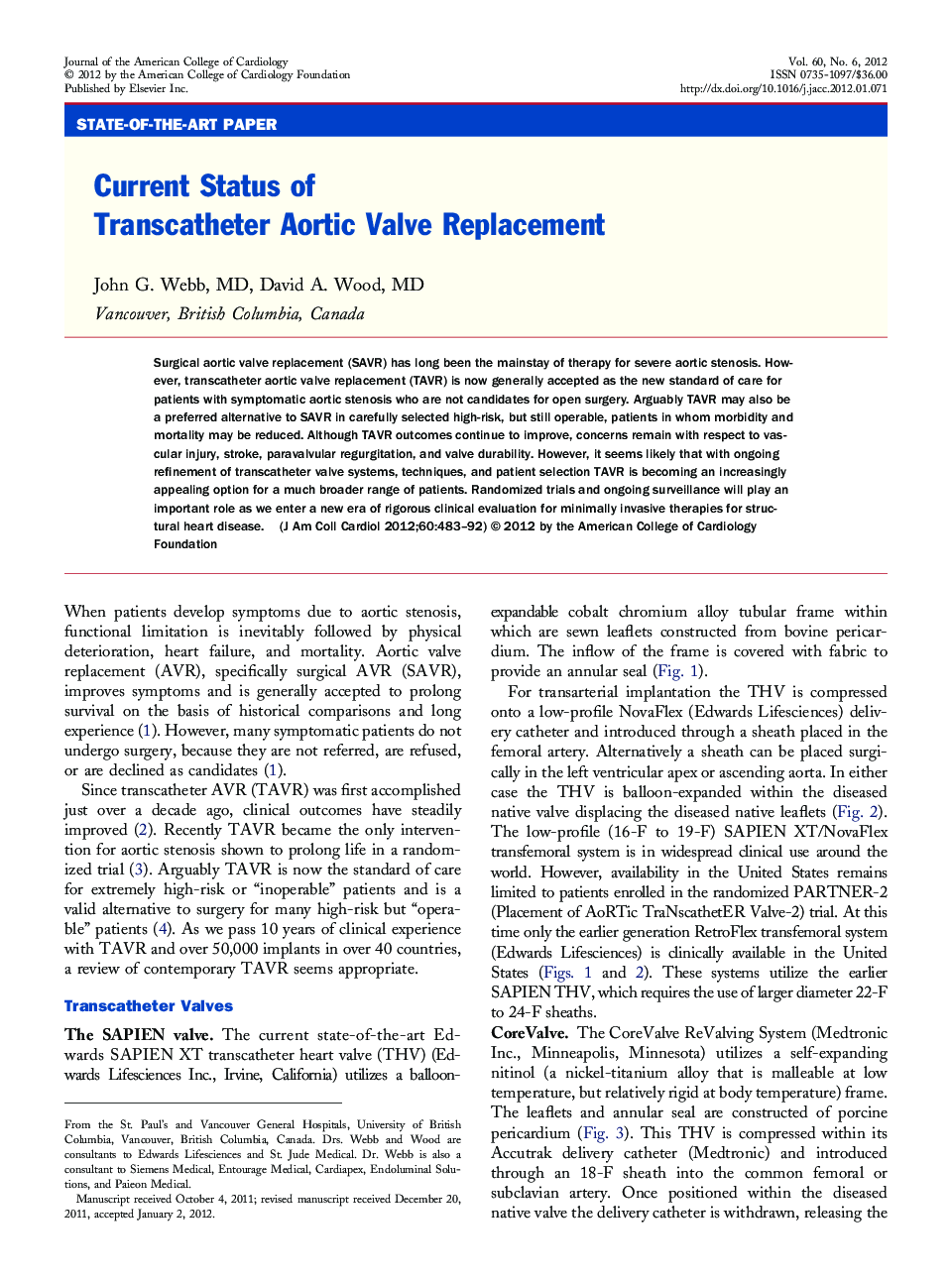| Article ID | Journal | Published Year | Pages | File Type |
|---|---|---|---|---|
| 2947169 | Journal of the American College of Cardiology | 2012 | 10 Pages |
Surgical aortic valve replacement (SAVR) has long been the mainstay of therapy for severe aortic stenosis. However, transcatheter aortic valve replacement (TAVR) is now generally accepted as the new standard of care for patients with symptomatic aortic stenosis who are not candidates for open surgery. Arguably TAVR may also be a preferred alternative to SAVR in carefully selected high-risk, but still operable, patients in whom morbidity and mortality may be reduced. Although TAVR outcomes continue to improve, concerns remain with respect to vascular injury, stroke, paravalvular regurgitation, and valve durability. However, it seems likely that with ongoing refinement of transcatheter valve systems, techniques, and patient selection TAVR is becoming an increasingly appealing option for a much broader range of patients. Randomized trials and ongoing surveillance will play an important role as we enter a new era of rigorous clinical evaluation for minimally invasive therapies for structural heart disease.
